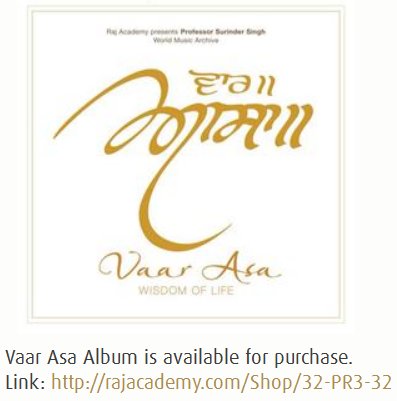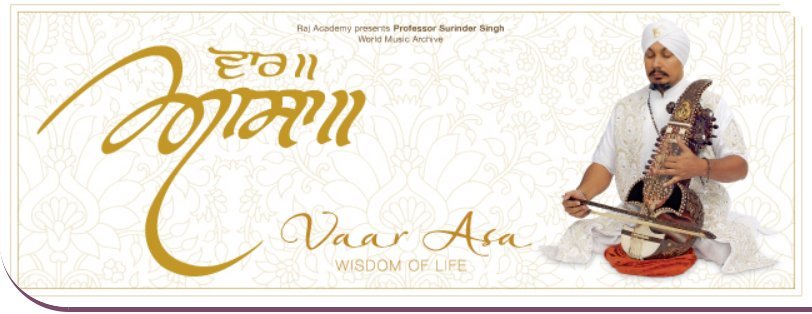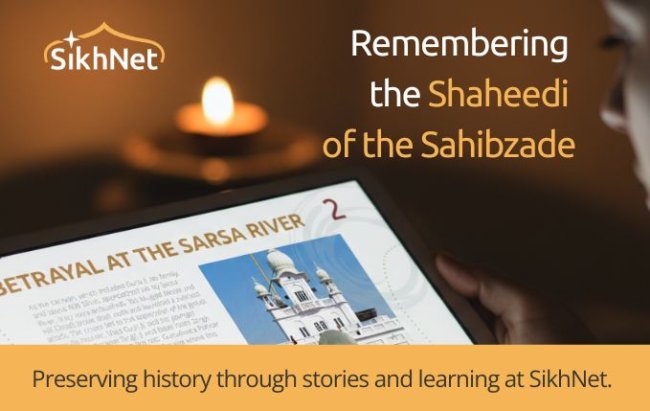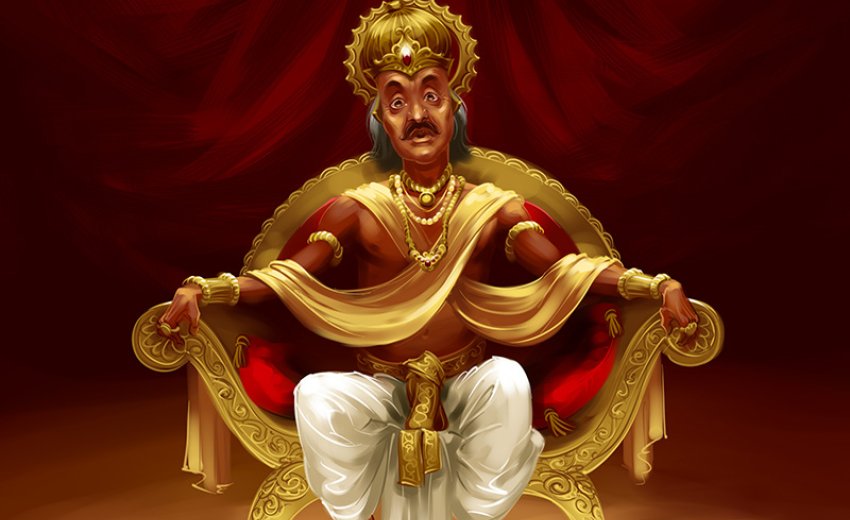|
Raj Academy
The
music from ancient Indian offers a path to learn and master the art of
life. Through a system of raags, the music from ancient India gives us
an ability to compose our emotions that arise from the ups and downs we
all experience. By learning to compose our emotions, we master the art
to compose our life as well.
The
timeless wisdom to learn the delicate art of composing life is
inscribed in the sacred scripture Siri Guru Granth Sahib. The knowledge
is arranged into a musical framework of 60 individual raags, where each
raag personifies a distinct emotion that every human experiences in
their journey of life.
Raj Academy’s mission is to share the timeless wisdom given to mankind through the discipline known as "Gurmat Sangeet", “Gurbani Kirtan” or "Naad Yoga".
It is our legacy to revive the music of innertainment and inspire all
to live a beautiful, composed life. By encouraging the practice of
Gurmat Sangeet and Naad Yoga in our daily life, we aspire to heal and
awaken the highest potential in every human being.
....more
----------------------------------------------------------------------------------
The story behind the Dhunni of Tunda Asraja:
During
the 16th Century in ancient India, there lived a king called Sarang,
who had three sons and the eldest of his children was named Asraj.
The first wife of the king had died several years ago, she had been
the mother of Asraj. The king then married again and had two more
sons. The stepmother of Asraj never favoured Asraj, she disliked him
very much. Her wish was for one of her sons to become the next king
and she secretly conspired to get rid of Asraj, the current heir to
the throne. Upon the sudden death of Sarang, the queen secretly
arranged for the assassination of Asraj, instructing the executioner
to ensure that Asraj would suffer a slow and painful
death.
Consequently, he chopped off both of Asraj’s
hands and threw him into a dry well, leaving him to bleed to death
there. After many hours, Asraj gained consciousness and heard
distance voices. He started to shout for help and luckily the
passersby heard his cries and rescued Asraj, putting him on a trolley
and treating his wounds. The group of people took Asraj along with
them, pushing the trolley at the front of the group. They walked for
hours and it was only on the morning of the following day that the
gate to the next city was seen in the distance.
As the
sun was beginning to rise over the horizon, they entered the main
gate and to their surprise they were greeted by members of the royal
court of the city who decorated Asraj in garlands of flowers and
jewels, whilst musicians played celebratory music for him and
everyone danced for joy. Asraj and his fellow travellers were
confused and disillusioned, they couldn’t understand what was going
on.
They were approached by a member of the royal court
who explained that the previous night the king of the city had died
and as per the law of the city, whenever a king has no next of kin,
then upon his death whoever is the first to enter the city will be
crowned as the new king. As Asraj had been pushed on the trolley at
the front of the group, he was the first to enter the city and was
now crowned king. From this moment Asraj was known as *Tunda
Asraja.
Asraj then quickly recovered and regained his inner
strength. He set out to seek justice in his home kingdom and was
victorious there. Asraj was righteous, fair and noble, loved by his
city and truly a king of the people. His courage brought him victory
and ever since people have sung tales of his bravery for their own
strength and inspiration.
This was the tale of Tunda
Asraja.
*Tunda is the term used to refer to somebody who has
no hands.
The time period of this incident was during the 16th
Century, during the Guruship of Guru Amardass Ji and the rulership of
Emperor Akhbar in India.
Vaar Asa was a fundamental part of a
Sikh’s daily discipline from the time of Guru Arjan Dev Ji. During
the heaviest and most challenging days that our ancestors faced in
the battle fields of Chamkaur and Bhangani they never gave up their
practice of Vaar Asa, it gave the Sikh warriors the strength and
spiritual focus they needed to achieve their victory.
In the
significance of the Siri Guru Granth Sahib, this tune of Tunda Asraja
is sung for this specific vaar to encourage strength and victory
during our daily challenge in life, while reminding us to always seek
inner inspiration.
Vaar Asa holds the light and courage our
mind needs to overcome the pain and laziness that we encounter each
day. It has the power to heal the deepest pain and shine the
brightest light within us. It was given as a blessing to humanity to
unfold and share the true Wisdom of Life.
--------------------------------------------------------------------------
|
| Professor Surinder Singh
is the founder of Raj Academy. It is through his dedication and passion
that this project came together after 30 years of research and 3 years
of recording and editing in studios across the world. His dream was to
bring together the most authentic rendition of Asa Ki Vaar which
complies with all of the instructions set out by the Great Sikh Masters
(Guru’s). He has devoted his life to the revival of Sikh Musical
Instruments and
Sikh Music Tradition through education and awareness, he has played a
major role in making these teachings more accessible and available to
all. "Now is the time to unite under the banner of Guru’s name so
that we can work together to preserve and promote the rich musical
heritage of Sikhs. This is just one project of many, there is so much
work yet to do and now I need your support. Please join me in this
journey dedicated in service to Guru."
Ustad Surjeet Singh
is a world renowned Sarangi player. He is the senior student of the
famous Pandit Ram Narayan (Sarangi Grand Master). Surjeet Singh has been
working with Raj Academy since 1999 in support of the work and efforts
made to revive Sikh Music.
Ustad Ranbir Singh has earned the title of being the "Worlds
only professional Taus player”. He has dedicated his life to Sikh Music
since the young age of 5 when he began his musical study on Dilruba in
Bhaini Sahib. He is without doubt a phenomenal musician who is extremely
gifted in playing the Taus and Dilruba and offers his experience as a
teacher for Raj Academy.
Ustad Sukhdev Singh is a master vocalist from the Namdhari Tradition, he is a disciple of Rajan &
Sajan Mishra from whom he gained all of his music training. Sukhdev
Singh has been gifted with a divine voice which he uses to sing kirtan
regularly in concerts and more frequently to the congregation in Bhaini
Sahib.
Late Ustad Mohan Singh was an extremely talented Master vocalist and senior student of Rajan &
Sajan Mishra. He spent most of his time teaching this art to students
across the world and sharing his wisdom of kirtan. Unfortunately he was
not able to see this project through to the end and departed from this
world before the project was launched, but his voice and teachings will
remain everlasting.
Bibi Amarjeet Kaur
is a senior student of the famous Ragi, Bhai Santa Singh where she
learnt Kirtan. She received her vocal training from Ustad Rattan Singh "Tansen"
and Ustad Naseer Ahmad Khan. Her voice has a distinct beauty and realms
of character that bring in the power and sweetness ideal for singing a
Vaar.
Rajinder Kaur
based in London is a student of Professor Surinder Singh ji, who
graduated through the BMus offered at the University of West London in
Gurmat Sangeet in 2012 and is now a dedicated teacher of Raj Academy.
She has dedicated her life to teaching kirtan and currently plays an
active role for all major Gurmat Sangeet courses taught within Europe.
Preetinder Singh
began his study of Sikh Music with Professor Surinder Singh at the
young age of 13. He has since found his passion and love for teaching,
performing and sharing Sikh Music to students of Raj Academy based in
North America and is now a teacher for Raj Academy.
|

About the Project This is a ground breaking recording as no one in the past 500 years have
recorded the Asa Ki vaar exactly how its sung in Sri Guru Granth sahib in
the prescribed Raag and Dhunni!
This recording has many features:
- It is sung in "Tunde Asrajay ki dhunni" throughout!
- Sung exactly the way it's written in Sri Guru Granth Sahib, meaning there
- are no chhants.
- Completely in Raag Asa
- Features
many artists such as Prof Surinder Singh, Ustad Ranbir Singh, Ustaad
Surjeet Singh, Ustad Sukhdev Singh, Late Ustad Mohan Singh, Bibi
Amarjeet Kaur, and a few others!!
- It features all the Sikh instruments!
|



